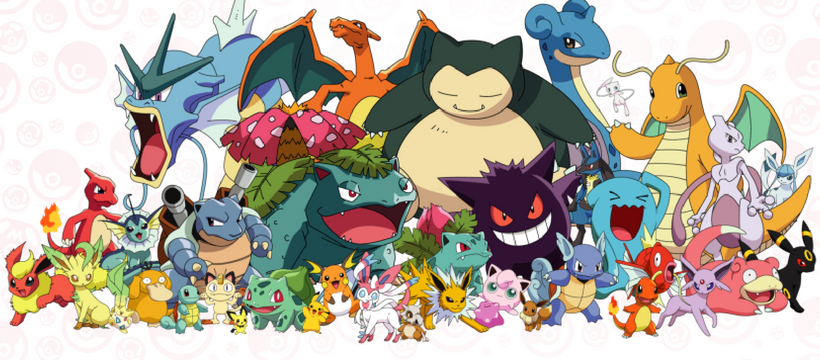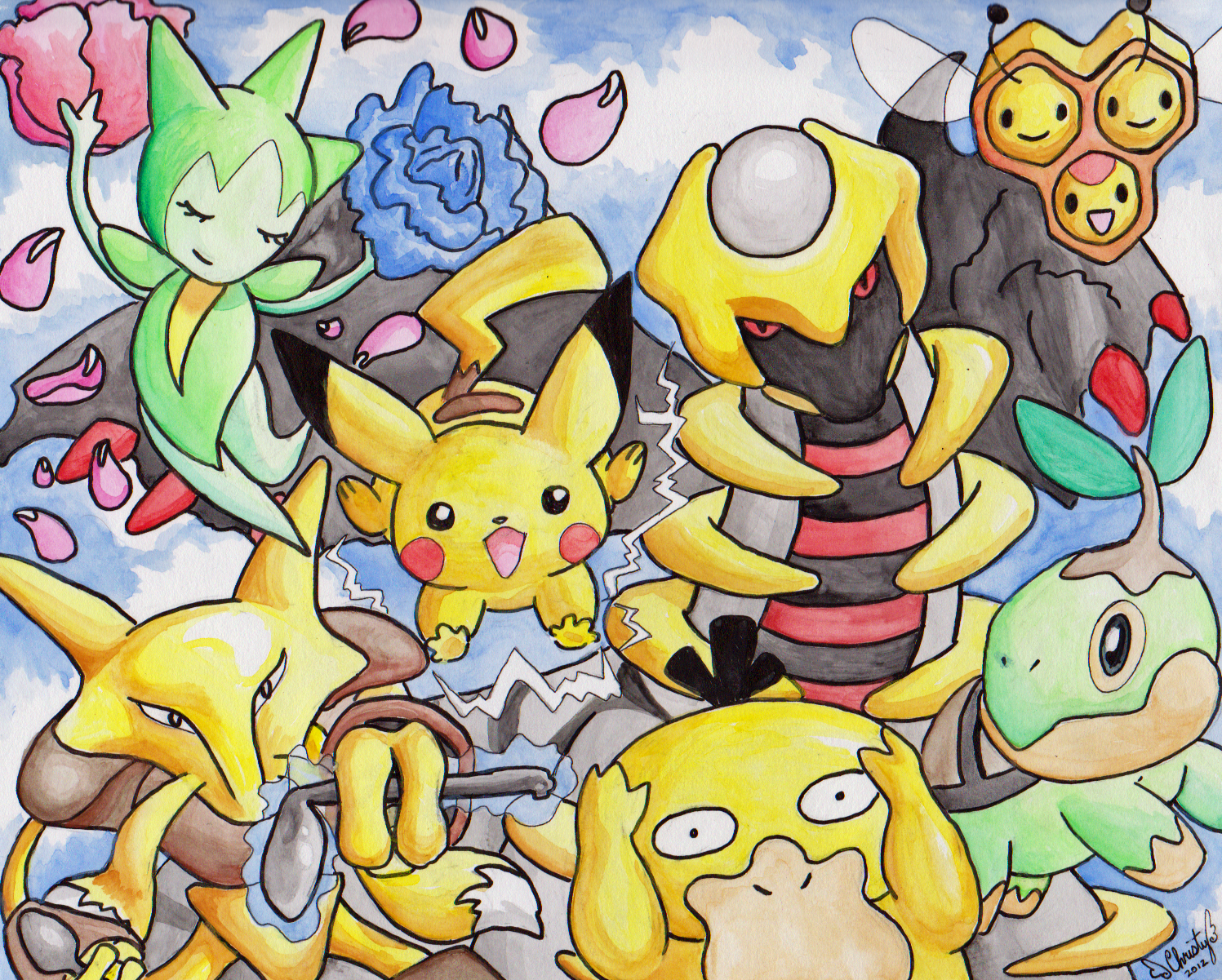POKEMON
The name Pokémon is the portmanteau of the Japanese brand Pocket Monsters.] The term "Pokémon", in addition to referring
to the Pokémon franchise
itself, also collectively refers to the 823 fictional species that have
made appearances in Pokémon media as of
the release of the seventh generation titles Pokémon: Let's Go, Pikachu! and Let's Go, Eevee! "Pokémon" is identical in the singular and plural, as is each individual species name; it is grammatically correct
to say "one Pokémon" and "many Pokémon", as well as
"one Pikachu" and
"many Pikachu"
Source : Google Image
Pokémon executive director Satoshi Tajiri first thought of Pokémon, albeit with a different concept and name, around 1989, when the Game Boy was released. The concept of the Pokémon universe, in both the video games and the general fictional world of Pokémon, stems from the hobby of insect collecting, a popular pastime which Tajiri enjoyed as a child.Players are designated as Pokémon Trainers and have three general goals: to complete the regional Pokédex by collecting all of the available Pokémon species found in the fictional region where a game takes place, to complete the national Pokédex by transferring Pokémon from other regions, and to train a team of powerful Pokémon from those they have caught to compete against teams owned by other Trainers so they may eventually win the Pokémon League and become the regional Champion. These themes of collecting, training, and battling are present in almost every version of the Pokémon franchise, including the video games, the anime and manga series, and the Pokémon Trading Card Game
 |
| Source : Google Image |
In
most incarnations of the Pokémon universe, a Trainer who encounters a wild
Pokémon is able to capture that Pokémon by throwing a specially designed,
mass-producible spherical tool called a Poké Ball at
it. If the Pokémon is unable to escape the confines of the Poké Ball, it is
considered to be under the ownership of that Trainer. Afterwards, it will obey
whatever commands it receives from its new Trainer, unless the Trainer
demonstrates such a lack of experience that the Pokémon would rather act on its
own accord. Trainers can send out any of their Pokémon to wage non-lethal
battles against other Pokémon; if the opposing Pokémon is wild, the Trainer can
capture that Pokémon with a Poké Ball, increasing their collection of
creatures. In Pokémon Go,
and in Pokémon: Let's Go,
Pikachu! and Let's
Go, Eevee!, wild Pokémon encountered by players can be caught in Poké
Balls, but generally cannot be battled. Pokémon already owned by other Trainers
cannot be captured, except under special circumstances in certain side games.
If a Pokémon fully defeats an opponent in battle so that the opponent is
knocked out ("faints"), the winning Pokémon gains experience
points and may level up.
Beginning with Pokémon X and Y, experience points are
also gained from catching Pokémon in Poké Balls. When leveling up, the
Pokémon's battling aptitude statistics ("stats", such as "Attack" and
"Speed") increase. At certain levels, the Pokémon may also learn
new moves, which are techniques used in battle. In
addition, many species of Pokémon can undergo a form of metamorphosis and
transform into a similar but stronger species of Pokémon, a process
called evolution; this process occurs spontaneously
under differing circumstances, and is itself a central theme of the series.
Some species of Pokémon may undergo a maximum of two evolutionary
transformations, while others may undergo only one, and others may not evolve
at all. For example, the Pokémon Pichu may evolve into Pikachu, which in turn
may evolve into Raichu, following which no further evolutions may occur. Pokémon X and Y introduced the
concept of "Mega Evolution," by which certain fully evolved Pokémon
may temporarily undergo an additional evolution into a stronger form for the
purpose of battling; this evolution is considered a special case, and unlike other
evolutionary stages, it is reversible.
In the main
series, each game's single-player mode requires the Trainer to raise a team of
Pokémon to defeat many non-player character (NPC) Trainers
and their Pokémon. Each game lays out a somewhat linear path through a specific
region of the Pokémon world
for the Trainer to journey through, completing events and battling opponents
along the way (including foiling the plans of an 'evil' team of Pokémon
Trainers who serve as antagonists to the player). Excluding Pokémon Sun and Moon and Pokémon
Ultra Sun and Ultra Moon,
the games feature eight powerful Trainers, referred to as Gym Leaders,
that the Trainer must defeat in order to progress. As a reward, the Trainer
receives a Gym Badge, and once all eight badges are collected, the Trainer is
eligible to challenge the region's Pokémon League, where four talented trainers
(referred to collectively as the "Elite Four")
challenge the Trainer to four Pokémon battles in succession. If the trainer can
overcome this gauntlet, they must challenge the Regional Champion, the master
Trainer who had previously defeated the Elite Four. Any Trainer who wins this
last battle becomes the new champion.
Source : Google Image
Source : Google Image



No comments:
Post a Comment